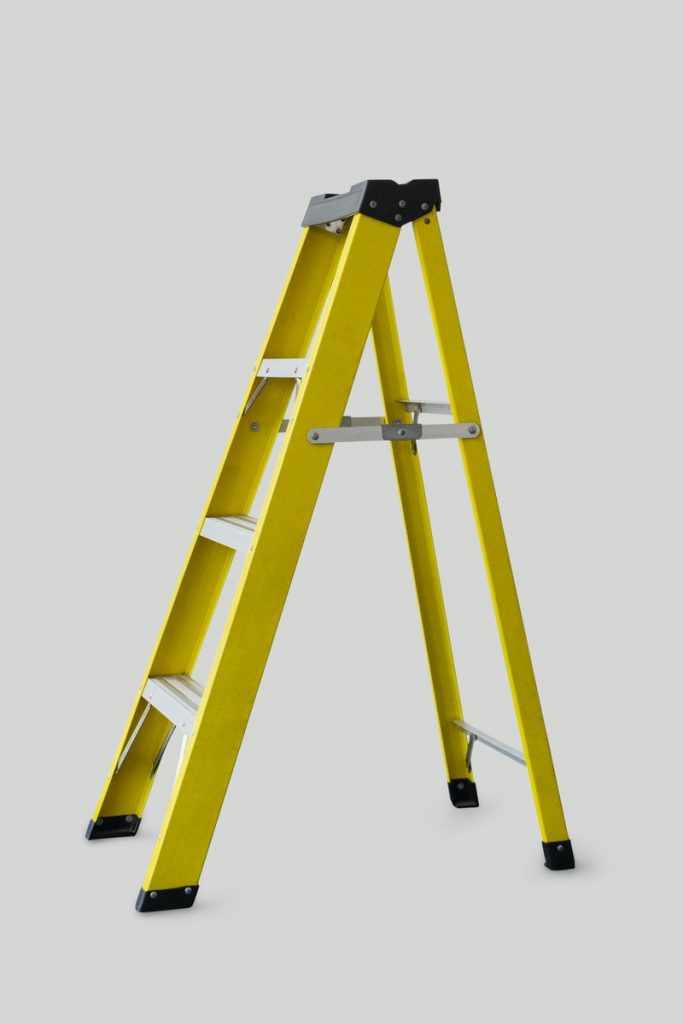The next time you’re perched on a stack of teetering books, trying to access a hard to reach spot, you might be asking yourself why you didn’t buy a step ladder sooner.
Whether it’s around the house or at work, step ladders are great for completing those small odd jobs quickly and safely, whether that’s painting a wall, pruning a tree or clearing your gutters. Versatile, indeed, and that’s why so many home and business owners class step ladders as an essential bit of kit.
But if it’s safety concerns that are holding you back from joining the majority in owning one, your caution is partially justified. However, despite the step ladder being indispensable for DIY enthusiasts and qualified tradespeople alike, some do indeed injure themselves when using one. Usually, this is through improper setting up or a faulty ladder.
To ensure you’re able to complete your tasks without being sent tumbling, here’s how to use a step ladder safely.
DO NOT USE FOR PROLONGED PERIODS
Step ladders are great for small, odd-jobs around the house and at work. If you need to use the step ladder for more than half an hour or so, however, it’s probably a good idea to think about a different access solution as their small design may not be able to withstand heavy loads for a prolonged period. Alternatively, considering enlisting professional help, should your tools and equipment not be up to the task.

INSPECT FOR WEAR & TEAR
Before using your step ladder, each and every time, be sure to give it a quick visual inspection to make sure there are no signs of damage or wear and tear. These may cause the ladder to tip whilst you are using it or for you to fall whilst mounting and dismounting.
FIRM PLACEMENT
Whilst using the step ladder, ensure both of its feet are firmly placed on level, non-slippery ground and keep them there whilst you are using it. The last thing you want is for the ladder to slip out of place whilst you are in the middle of your task. Never try to use a stepladder flush against the wall, as you would an extension ladder, and don’t try to readjust its position once you’re on it.
LOCKING
When using the step ladder, be sure to double-check that the locking mechanism is fully engaged after you’ve unfolded it. This will ease any worries of the step ladder suddenly folding whilst working on it

CLIMB ABOARD
Before climbing up your step ladder, be sure to make note of the maximum weight load and that whatever you plan on doing, you don’t exceed this amount. Doing so could again cause the ladder to lose stability which can lead to nasty and unwanted accidents. Remember, it’s not just your weight that you need to be mindful of, but also the weight of anything you might need to carry whilst climbing up or down.
When working, maintain three points of contact with the step ladder; whether it’s two feet and a hand, two hands and one foot, or two feet and one hand, or if you require a hand for work, allow the stepladder to support your body.
DIRECTION
Whenever possible, ensure your step ladder is positioned so that you are facing the direction in which you need to be working. This will prevent you from twisting your body whilst on the ladder and stop you from losing your balance and falling.
DON’T OVERREACH
Whilst on the ladder, never overreach to get to a particular position or place. Overreaching again can cause you to lose balance and fall off of your step ladder. Instead, climb down and reposition the step ladder so that you are in a better place to reach where you need to. It’s generally recommended that you don’t balance on the top two rungs of the ladder when working, instead standing lower to ensure stability.
THE BOTTOM LINE
Though stepladders are both useful and ubiquitous when carrying out DIY tasks at home and at work, they need to be approached with the proper caution to avoid falls and injury. Complacency won’t do; instead, apply our safety tips and complete your jobs with confidence.





